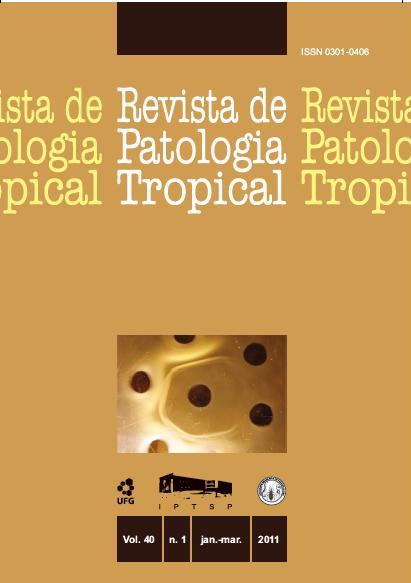Calcium mobilization in Biomphalaria glabrata exposed to different quantities of calcium carbonate
DOI:
https://doi.org/10.5216/rpt.v40i1.13916Keywords:
Schistosomiasis, Biomphalaria glabrata, Calcium.Abstract
Calcium is essential to mollusk’s life, because is associated with shell formationand metabolic processes that are essential to maintain their homeostasis. The aim
of this work was to verify the mobilization of calcium in the haemolymph and
shell of Biomphalaria glabrata (strain BH) exposed to different calcium carbonate
concentrations. Sixty days old snails were used for this study, distributed in five
groups: four groups exposed to different concentrations (20, 40, 60, 80 mg/L)
of calcium carbonate and one control group. The exposition time was forty-five
days. Fortnightly, the snails were sacrificed by cardiac puncture for haemolymph
extraction. The concentration of calcium was determined in the haemolymph,
using diagnosis kits (Doles Reagentes®) and for the calcium content in the shell,
a modified volumetric method of complexing was employed. The results showed
an increase of the calcium content in haemolymph and a decrease in shell of snails
exposed to 15 days of 20mg/L of calcium carbonate. In the other exposed groups, the calcium concentration in the haemolymph was inversely proportional to the amount of calcium in the shell. We conclude that in snails exposed to different amounts of calcium, mobilization in the hemolymph and in the shell occurs according to the amount of calcium available.
Downloads
Downloads
Published
How to Cite
Issue
Section
License
The manuscript submission must be accompanied by a letter signed by all authors stating the full name and email address, confirming that the material has not been published or is under consideration for publication elsewhere, and agreeing to transfer copyright in all media and formats for Journal of Tropical Pathology. The authors will not be paid for published articles. They are solely responsible for the content of those articles, even if the Editor holds the right to adjust them to the norms of the journal.
The reviewers will not be paid for the peer review process.

